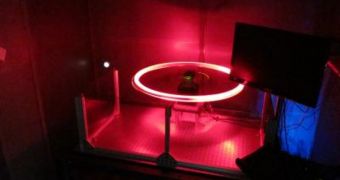At this point, the international scientific community has access to a number of methods for analyzing single DNA and protein molecules, as well as their interactions. However, most of these approaches have very high costs, and a low throughput rate. A new approach, developed by scientists at the Harvard University Rowland Institute, promises to make DNA and protein analysis and manipulation easier than ever. The technique is called “single molecule centrifugation (SMC),” and it is currently being hailed as a promising method for reducing costs, and improving throughput rates.
“By combining a microscope and a centrifuge, forces can be applied to many molecules at once while simultaneously observing their nano-to-microscale motions,” says Harvard RI scientist Wesley P. Wong. He is the author of a new paper detailing the findings, which appears in the June 2 issue of the esteemed scientific Biophysical Journal. The expert was also the principal investigator on the research. The efficiency level associated with SMC exceeds that possible with atomic force microscopes (AFM) and optical/magnetic tweezers, the other commonly-used methods for manipulating small molecules.
The tweezers are basically traps, in which single molecules are isolated via either light, or strong magnetic fields. The researchers can then manipulate DNA or proteins at will, but maintaining the tweezers operational is very expensive. On the other hand, AFM are also very cost-intensive to use, and also very large. These instruments have, however, allowed for massive improvements in our understanding of how these small molecules work, and what their influence is inside our bodies. The Harvard team now says that it's time for their new Centrifuge Force Microscope (CFM) to become the norm in such investigations.
“We're really excited about this new method. After doing tedious single-molecule experiments for years, we thought there had to be a better way. Now, instead of doing one experiment thousands of times we can do thousands of experiments at once,” says Harvard postdoctoral fellow and study coauthor Ken Halvorsen. One of the main challenges the team had to face in creating the CFM was producing a light microscope at a very small scale, and then augmenting it in such a manner that it would withstand the rigors of fast-speed centrifugation.

 14 DAY TRIAL //
14 DAY TRIAL //